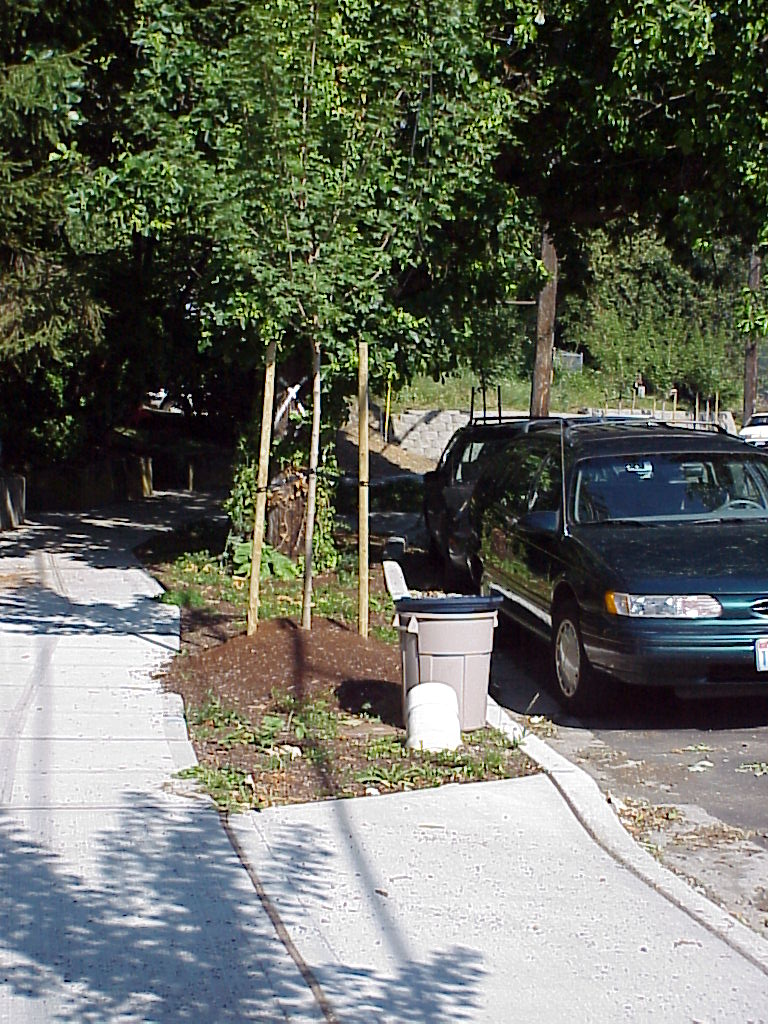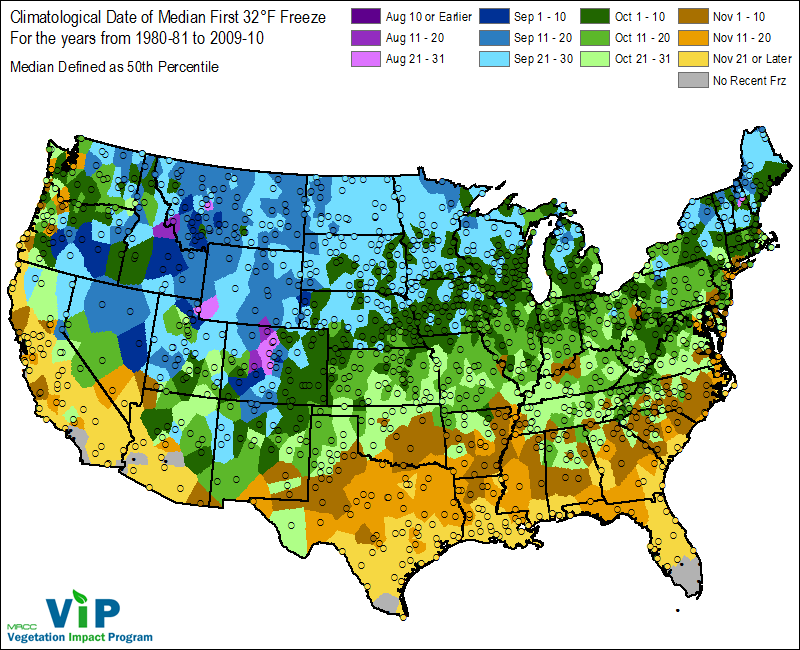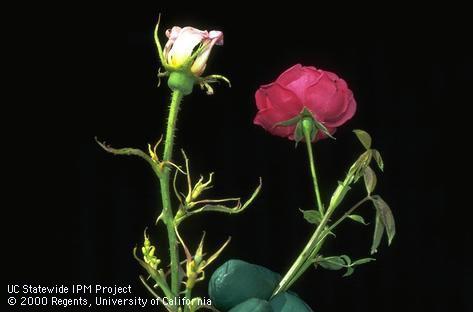In the past week, two new major climate reports have been released. One is the latest (6th) report from the Intergovernmental Panel on Climate Change (IPCC) and the other is the State of the Climate 2020 report. Of the two, the IPCC report has garnered a lot more press, but both are compilations of work by hundreds of scientists looking at recent weather and climate patterns and how they are affecting us here on earth. The IPCC report also provides projections of what the future climate might be like, using a number of assumptions about how the earth behaves, which can be difficult, and how humans respond, which is arguably even tougher to determine. In this post, there is no way that I can cover both sets of reports in meaningful detail and I won’t address how we need to address the rapidly changing climate here, but I do want to try to pull out some things that you can use as gardeners now. {Note, the pictures are ones I have taken myself on recent trips to use as eye candy!}

What do the new reports tell us?
The State of the Climate 2020 report, published jointly by NOAA and the American Meteorological Society, focuses on global climate events that happened in 2020. You can read some of the notable findings from the report at my blog. The report also discusses many of the “big” climate events of 2020 and puts them into historical context, including how frequently these extreme events occur and how the changing climate is making them more likely.
The United Nations’ IPCC 6th Assessment Report presents similar information but also makes more explicit the cause of the warming, which scientists have known for well over 100 years has been caused primarily by human emissions of greenhouse gases in the atmosphere that trap heat near the earth’s surface. The IPCC report makes it clear that the rapid pace of the warming will cause severe changes to the earth’s climate that will be difficult for humans and ecosystems to adapt to.

What do the conclusions of these reports mean for gardeners?
Here are some of the changes that we will have to adapt to in the future:
- Rising temperatures across the globe—Temperatures are rising across nearly all the globe, both on land and in the oceans. Warmer temperatures mean warmer winters, hotter summers, and longer growing seasons. They also mean more increases in both evaporation from water surfaces and more evapotranspiration from plants, resulting in increases in water stress. That means you may need to water more often or use other techniques like mulch to preserve soil moisture. You may also need to switch to more heat-tolerant species as the USDA plant hardiness zones shift north (in the Northern Hemisphere). It may become harder to work in the middle of the day when it is the hottest.
- Rising temperature leads to rising humidity levels, at least where there is a source of water vapor nearby. The higher humidity is contributing to higher night-time temperatures, which puts stress on animals living outdoors (pets, livestock, and wildlife) and also stresses some plant species. It can also lead to more clouds, which reduce direct sunlight and cool the air but also reduce solar radiation available for plants, slowing their development. You may have to manage your gardens for more diseases that are related to the high humidity levels.
- Some areas like the northern US may see more rain, while others like the Southwest become increasingly dry. Year-to-year variability in precipitation is also likely to increase, with both more floods and more droughts. In both cases, water management of your gardens will become increasingly important, with the heavy rain events causing more erosion and the potential for loss of plants and trees from too much water and not enough air in the soil, and the longer dry spells making gardens more dependent on either drought-tolerant species or more frequent irrigation. You may have to put in rain gardens to help slow the movement of water through your gardens in heavy rain.
- With the rising temperatures, frost and snow will become less likely but will still occur (there will still be winter!). This will allow you plant earlier than in previous decades but will still make the plants vulnerable to late-season frosts.
- Increases in carbon dioxide may provide some fertilization of some plants, but only if there is enough water available for growth. Since some weedy species are more efficient at using carbon dioxide than other plants, you may need to deal with more weeds and invasive species in the future than you do now.
- Strong storms like hurricanes and derechos may occur more often and be more damaging than the ones we are already seeing now. The research in this area is less definitive than that for rising temperatures because there are many different factors that go into storm development, but scientists generally agree that the number of hurricanes seems to be climbing upward and that the seasons are getting longer. In addition, the storms appear to be moving slower, and that is likely to lead to more rain from the storms over a specific area and more likelihood of rapid storm development. If you live in an area that is prone to strong thunderstorms or tropical cyclones, you may see them more often and the season may start earlier in the year. Rains and winds are likely to increase, leading to more tree damage and flattened plants.

Will we be able to see these changes over the next few years?
Year-to-year variations in climate will continue to plague gardeners, since whatever happened last year is unlikely to occur again this year. The climate naturally varies over time and space as well as exhibits these long-term changes. That means it can be hard to see the creeping trends in temperature and precipitation in the noise of yearly climate swings. If you are only worried about next year’s garden, what is happening in 50 years may not be of much interest. But if you care about your children’s gardens and their future on a warmer earth, than it is something these two reports make clear we have to think about and do something about.
Personal note: This week I was also invited to participate as an author on another upcoming large climate report, this one the 5th National Climate Assessment (NCA) that focuses on changing climate in the United States. I will be one of a number of authors contributing to the chapter on the Southeast US. If you are interested in what the content of that report includes, you can view the 4th National Climate Assessment, released in November 2018. There are chapters for each section of the country, but also chapters that deal with economic sectors like water and agriculture. The 5th NCA will update the information in the previous version as well as add additional information based on scientific studies completed since then.
References:
The State of the Climate report in a peer-reviewed series published annually as a special supplement to the Bulletin of the American Meteorological Society. The journal makes the full report openly available online, here. NCEI’s high-level overview report is also available online, here.
Sixth Assessment Report, Climate Change 2021: The Physical Science Basis is now out. The report addresses the most up-to-date physical understanding of the climate system and climate change, bringing together the latest advances in climate science, and combining multiple lines of evidence from paleoclimate, observations, process understanding, and global and regional climate simulations. Get more information including links to the press release and some videos here.

















